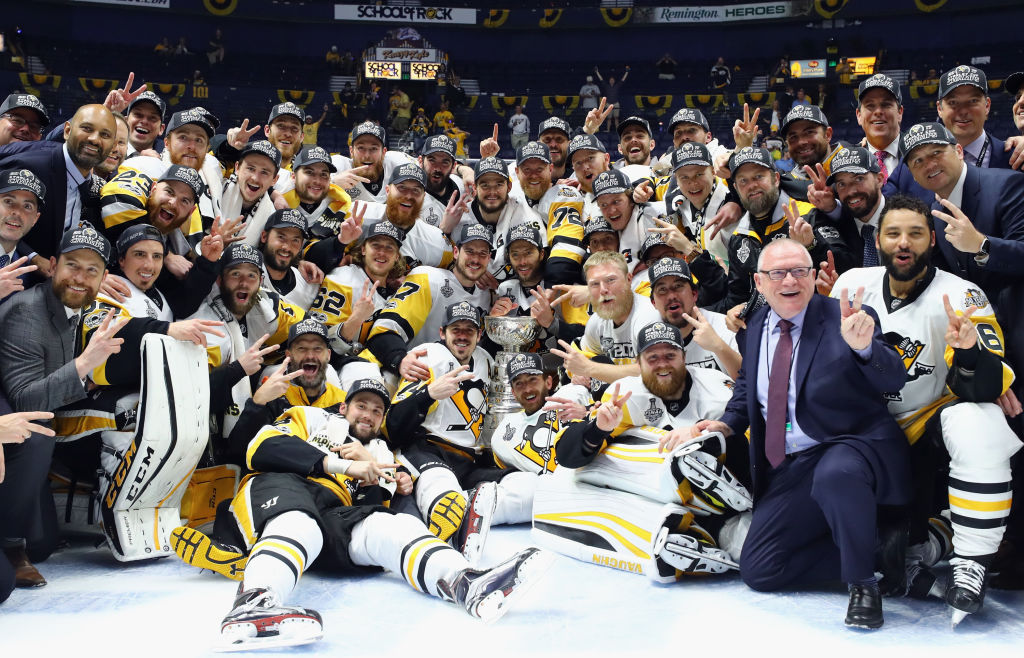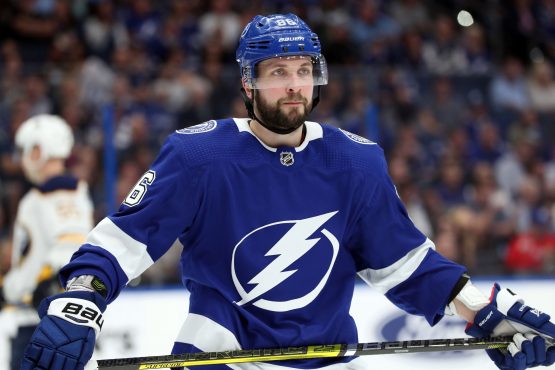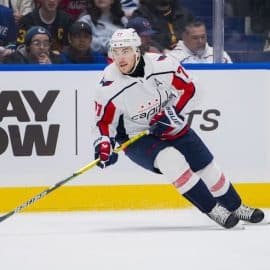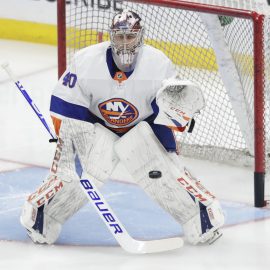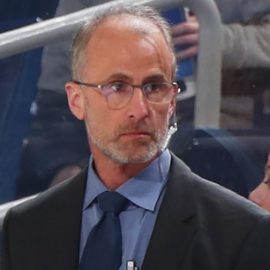For the first time since 1997 and 1998, the NHL has seen a team win back-to-back Stanley Cups. Following a hard-fought series against the Nashville Predators, the Pittsburgh Penguins have once again lifted Lord Stanley.
Patric Hornqvist scored the Cup-clinching goal against the team that drafted him with just minutes remaining in the third period of game six, breaking a scoreless deadlock of a game. Moments later, his countryman (and best friend) Carl Hagelin sealed the deal with an empty-net goal.
As the Penguins repeated as champions, their captain also repeated as playoff MVP. Sidney Crosby was awarded the Conn Smythe trophy for the second year in a row, beating out close competitors such as linemate Jake Guentzel and either member of the goalie tandem, Marc-Andre Fleury and Matt Murray.
Yet after the Cup was lifted at center ice, paraded around Pittsburgh, and taken for a swim in Crosby’s pool, the Penguins look forward to next year. Head coach Mike Sullivan, who has never lost a playoff series during his time with the Pens, already challenged his team to seek a three-peat next season.
The last time that happened? The early 1980s New York Islanders.
Winning the Stanley Cup once is no small feat; doing it back-to-back is even more impressive. When you look at the Penguins’ runs in 2016 and 2017, there was enough consistency that it’s easily understandable how they won again. On the other hand, there was more adversity for the team this year.
The Penguins’ injury curse strikes hard, fast, and often essentially every season. (That’s why it’s a curse.) This year, it took out Kris Letang just halfway through the season, relying on Justin Schultz and Trevor Daley to carry the oft-maligned back-end. Then Daley got hurt, as did several key forwards, and the roster looked more like Sidney Crosby and his merry band of AHL call-ups.
That’s nothing new; it happened in 2016 as well and the young guns – like Conor Sheary and Bryan Rust – led the way to the Stanley Cup. This year, though, those call-ups were already bona fide Cup champs and NHL players, meaning that a whole new group of inexperienced players would slot in.
The trades intended to counter that, made at the trade deadline, were solid, but not exactly a cure-all. Ron Hainsey and Mark Streit had their time in the sun occasionally, but more often than not seemed to be the older, slower odd men out.
The thing about both these teams that made this year’s Cup Final is how similar they actually were. Both relied handily on speed and several young, fast players. The defense is built up of both bigger, stay-at-home players as well as flashy offensive defensemen who are never afraid to lead a rush up the ice. Both have a goalie tandem composed of a Hall of Fame-caliber veteran and a talented underdog rookie. Finally, both teams picked up star players that the Canadian media had dragged through the dirt and gave them new lives (that is, Phil Kessel and P.K. Subban).
The Penguins had been here before, though, and the Predators had not. While I fully believe the Preds will return to this stage very soon – how could they not, given the powerhouse performance they put on this postseason and how deep their prospect group is? – that lack of deep playoff experience was a killer.
The Preds may escape the expansion draft with minimal changes to their roster – defenseman Yannick Weber has already been re-signed, while most expansion predictions expect that forward Calle Jarnkrok will be taken by the newly minted Vegas Golden Knights – but the Penguins will not. Herein lies the challenge of the three-peat.
Since Matt Murray cemented himself as the starter during the 2016 Stanley Cup run, Marc-Andre Fleury’s future in Pittsburgh has been in jeopardy. It was immediately assumed that Vegas would select one of the two star goalies during their expansion draft. However, the no-move clause in his contract meant that unless Fleury waived it, they would take Murray.
Always a team player, Fleury apparently waived that clause back before the trade deadline this season, opening the door for the Penguins’ front office to move him and get a return on the man who had carried them so far before. Of course, Fleury did not get traded, thankfully for the Penguins. They relied on him heavily through the first two rounds of this year’s playoffs, as Murray was out with a torn hamstring.
Without Fleury, the Pens never would have seen the second round. Without Murray, they wouldn’t have seen a second straight – or even a first – Stanley Cup.
Furthermore, Tristan Jarry has developed nicely in Wilkes-Barre/Scranton and, as of now, is the heir apparent to the backup role. It seems that the team has already accepted that Fleury will more likely than not be leaving, discussing it with the media on their locker clean out day.
The loss of Fleury will surely be a hard pill to swallow, despite the rumors swirling for over a season now. As good of a goalie Fleury is, there’s no better guy in the locker room to have around than him.
As the trades begin this offseason, do not expect either of these two finalist teams to make big moves, let alone the Penguins. General manager Jim Rutherford has conceded that the team is looking to bring in some bigger players to dissuade cheap shots (because that worked out so well when we took on Max Lapierre, and Steve Downie, and Steven Oleksy, and Tom Sestito, and…) but it’s hard to see him sacrificing any major assets for a player in this role.
The expansion to Las Vegas has thrown a wrench into this offseason and its predictability, but we can be sure that big changes will be coming to Pittsburgh.
As for the three-peat, we’ll check back in a year.
Add The Sports Daily to your Google News Feed!
